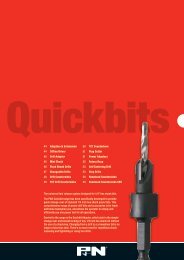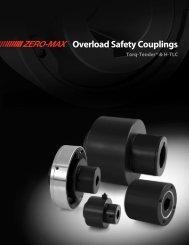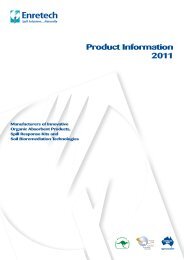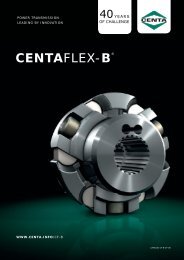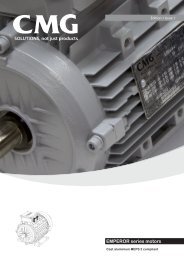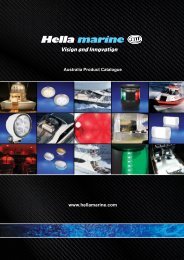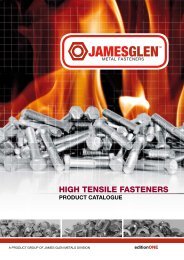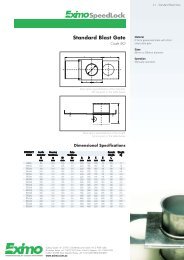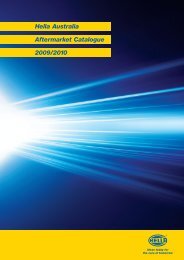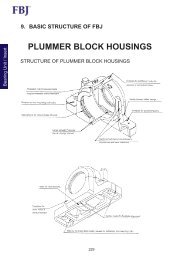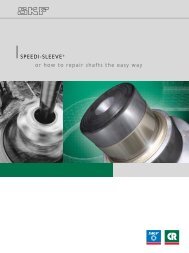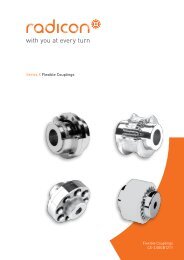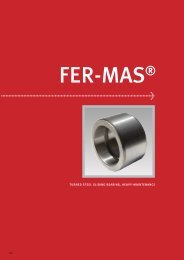Download - Industrial and Bearing Supplies
Download - Industrial and Bearing Supplies
Download - Industrial and Bearing Supplies
You also want an ePaper? Increase the reach of your titles
YUMPU automatically turns print PDFs into web optimized ePapers that Google loves.
Capacitors 135<br />
TECHNICAL<br />
Power factor in Fluorescent <strong>and</strong><br />
HID Circuits<br />
For a pure resistive load in an electrical circuit,<br />
the voltage (V) <strong>and</strong> current (I) are in phase with<br />
each other <strong>and</strong> the overall power factor (cosΦ)<br />
has a value of unity. It can also be said that<br />
the average power (P) of the resistive circuit is<br />
equal to the apparent power (S), ie. P = V x I.<br />
However, in a pure reactive electrical circuit,<br />
there is no resistive component; the voltage<br />
<strong>and</strong> current are 90° out of phase, ie. cosΦ = 0.<br />
Electrical circuits containing a combination of<br />
both resistive <strong>and</strong> reactive elements display<br />
both average power <strong>and</strong> apparent power<br />
components.<br />
Power factor is therefore the ratio by which<br />
the apparent power is multiplied, in order<br />
to obtain the average power actually being<br />
consumed in the circuit, ie. P = V x I x cosΦ.<br />
For example, a power factor of 0.5 indicates<br />
that the circuit has a reactive component<br />
having a phase angle of +60° or -60°.<br />
In common practice most loads are inductive<br />
<strong>and</strong> therefore the current lags the voltage<br />
(lagging power factor), whereas a typical<br />
capacitive load has a leading power factor.<br />
Fluorescent <strong>and</strong> HID lamp circuits have an<br />
inherent low power factor (around 0.4 to<br />
0.5), due to the control gear inductance.<br />
The inductance is in the circuit to limit the<br />
current through the lamp, however, in lighting<br />
installations where many lamps are used,<br />
high input current increases the cost of mains<br />
reticulation.<br />
Raising the power factor by means of the<br />
inclusion of a capacitor (opposite effect to an<br />
inductor) substantially reduces the current<br />
drawn from the mains, giving improvement<br />
in the reticulation efficiency, which in turn<br />
enables a reduction in copper wire size <strong>and</strong><br />
transformer sizes (the generating equipment).<br />
Most power distribution authorities have a<br />
requirement of high power factor (HPF) for<br />
lighting installations of generally 0.85 to 0.95<br />
minimum.<br />
Figure 1 Figure 2<br />
A typical discharge lighting circuit without<br />
power factor correction, eg. 400W high<br />
pressure sodium, has a power factor of<br />
approximately 0.4. Figure 1 shows the<br />
relationship of current <strong>and</strong> voltage in this<br />
application.<br />
This power factor characteristic can be<br />
corrected to approximately 0.9 by adding<br />
a capacitor (leading) to the lagging line<br />
current, to cancel the phase shift. Figure 2<br />
illustrates this.<br />
In common application therefore, by<br />
connecting a capacitor into the lighting circuit,<br />
the power factor can be improved to the<br />
values normally prescribed by the regulatory<br />
authorities so that practically inductance free<br />
operation results.<br />
L<br />
N<br />
C<br />
Ballast<br />
S<br />
Lamp<br />
Capacitor Quality<br />
Assured quality of capacitors is first <strong>and</strong><br />
foremost <strong>and</strong> cannot be compromised. Hella<br />
uses accepted IEC <strong>and</strong> BSI St<strong>and</strong>ards as the<br />
minimum measure of quality.<br />
Production is integrated with an audited<br />
Quality System that is accredited to AS/NZS<br />
ISO9002 <strong>and</strong> supported by a technical team<br />
<strong>and</strong> fully equipped laboratory facilities.<br />
Hella power factor correction lighting<br />
capacitors have been certified by British<br />
St<strong>and</strong>ards Institute to BSEN 61048, <strong>and</strong><br />
BSEN 61049 <strong>and</strong> has ENEC approval (License<br />
no. KM 30180).<br />
These st<strong>and</strong>ards provide, thorough quality<br />
checks of materials <strong>and</strong> capacitance<br />
characteristics, a capacitor that retains its<br />
integrity under the required conditions of<br />
operation.<br />
Quality Test Program<br />
• materials / component inspection<br />
• end spray thickness test<br />
• voltage test<br />
• capacitance tolerance check<br />
• dissipation factor<br />
• physical inspection<br />
• end product batch test<br />
• endurance test<br />
• Assured Quality Systems (ISO9002 series)<br />
• BSI certification<br />
• ENEC approval<br />
• testing of the dielectric materials<br />
• in-line 100% capacitance testing<br />
• new automatic ‘AC’ tester<br />
• stud mounting or alternative clip spring<br />
accessories.



